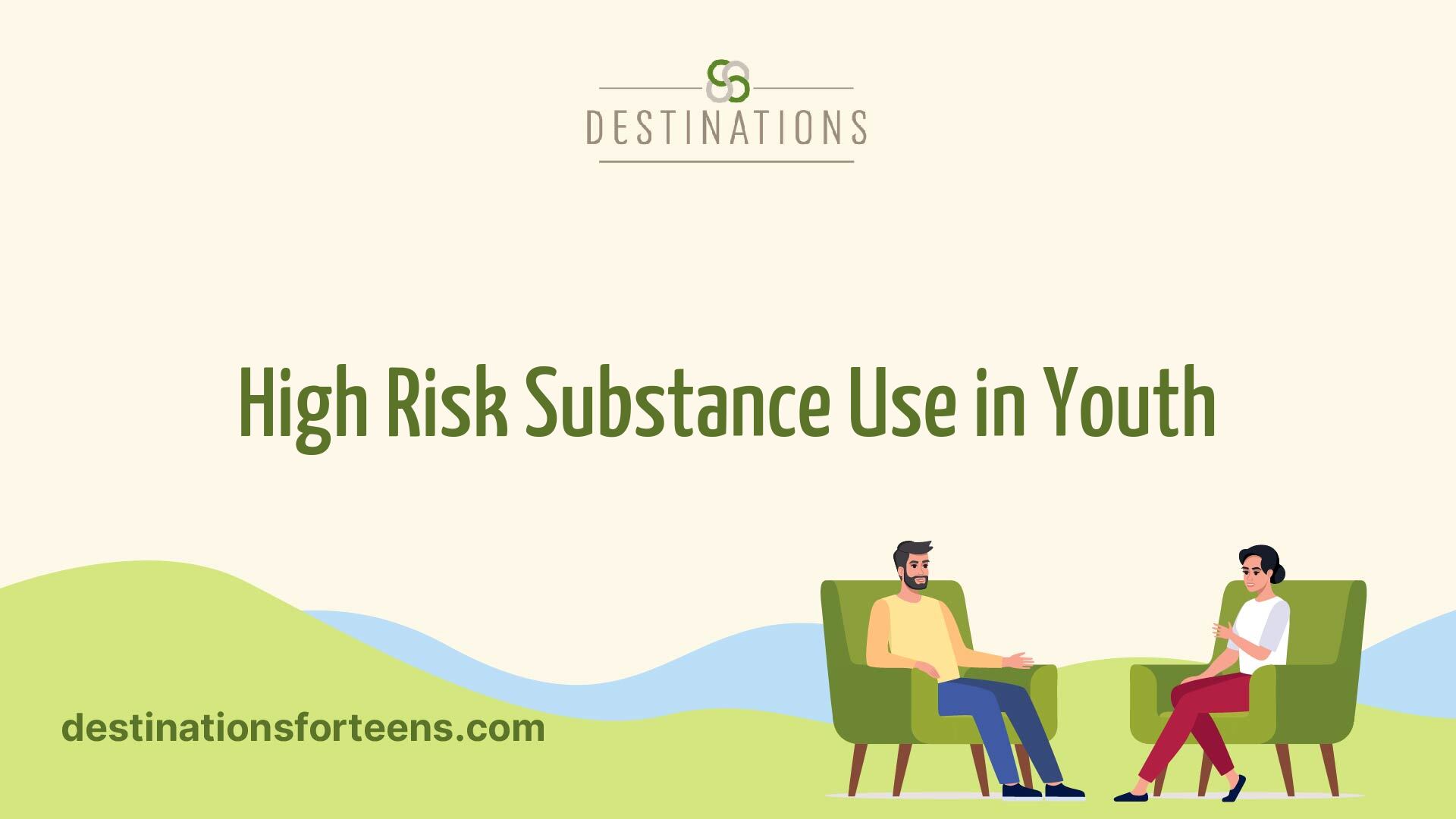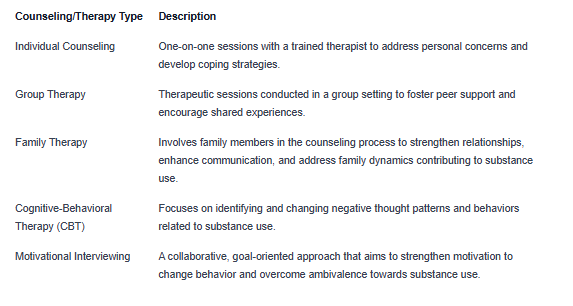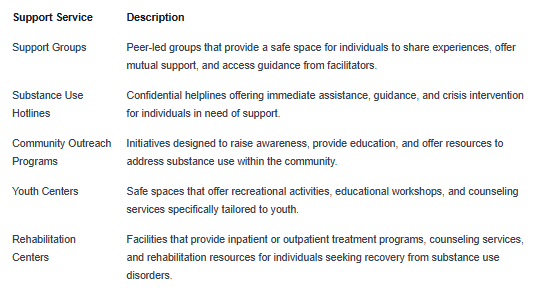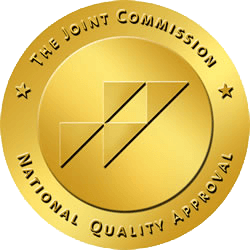High Risk Substance Use in Youth
Combat high-risk substance use in youth with insightful strategies and vital support resources.
Understanding High-Risk Substance Use in Youth
When addressing the complex issue of high-risk substance use among youth, it is crucial to have a comprehensive understanding of the definition, scope, and factors contributing to this behavior.

Definition and Scope
High-risk substance use in youth refers to the consumption of drugs or alcohol in a manner that poses a significant threat to their health, safety, and well-being. This behavior often involves the misuse or abuse of substances, leading to harmful consequences both in the short and long term.
Understanding the scope of high-risk substance use involves examining the prevalence of this behavior among youth populations. By recognizing the extent to which young individuals engage in risky substance use, effective prevention and intervention strategies can be implemented to address this growing concern.
Factors Contributing to High-Risk Substance Use
Several factors contribute to the development of high-risk substance use behaviors in youth. These factors can vary from individual to individual and may include a combination of biological, psychological, social, and environmental influences.

By identifying and understanding the various factors that contribute to high-risk substance use in youth, stakeholders and intervention programs can tailor their approaches to effectively address these underlying issues and provide support to those in need.
Risks and Consequences
When it comes to high-risk substance use in youth, understanding the risks and consequences is essential in addressing this pressing issue. This section delves into the immediate health risks and long-term effects associated with high-risk substance use among young individuals.
Immediate Health Risks
High-risk substance use in youth can lead to a range of immediate health risks, impacting both physical and mental well-being. These risks may manifest shortly after substance consumption and can have severe consequences if not addressed promptly.
Immediate Health Risks of High-Risk Substance Use
Impaired judgment and decision-making
Accidents or injuries due to impaired coordination
Risk of overdose and poisoning
Respiratory issues, including difficulty breathing
Cardiovascular complications, such as increased heart rate
Agitation, anxiety, or paranoia
Unintended risky behaviors, including unsafe sex
Interactions with prescription medications leading to adverse effects
It is crucial for individuals, parents, educators, and healthcare providers to be aware of these immediate health risks to intervene effectively and prevent potential harm to youth engaging in high-risk substance use.
Long-Term Effects
In addition to immediate health risks, high-risk substance use in youth can have lasting repercussions that extend into their future. These long-term effects may impact various aspects of their lives, including physical health, mental well-being, relationships, education, and future opportunities.
Long-Term Effects of High-Risk Substance Use
Development of substance use disorder or addiction
Cognitive impairments and memory problems
Impaired brain development, especially in adolescents
Emotional and psychological issues, such as depression and anxiety
Academic difficulties and poor school performance
Disrupted family dynamics and strained relationships
Increased risk of legal complications and criminal behavior
Higher likelihood of continuing substance use into adulthood
Understanding the long-term effects of high-risk substance use is crucial for implementing effective prevention and intervention strategies to mitigate these consequences and support the well-being of youth at risk.
By recognizing both the immediate health risks and long-term effects associated with high-risk substance use in youth, stakeholders can work collaboratively to address this issue comprehensively and foster a healthier and safer environment for young individuals.
Identifying High-Risk Behaviors
In the realm of high-risk substance use in youth, identifying warning signs and risk factors is crucial to early intervention and prevention efforts. By recognizing the signs and symptoms exhibited by young individuals engaged in risky behaviors, as well as understanding the underlying risk factors that contribute to such behaviors, stakeholders can proactively address these concerns.
Signs and Symptoms
Recognizing the signs and symptoms of high-risk substance use in youth is instrumental in detecting potential issues early on. While these indicators may vary among individuals, common signs to be vigilant for include:
Signs and Symptoms of High-Risk Substance Use
Sudden changes in behavior or mood
Decline in academic or occupational performance
Social withdrawal or isolationIncreased secrecy or lying about whereabouts
Physical symptoms like bloodshot eyes, tremors, or unexplained weight loss
Sudden changes in peer group or loss of interest in previous hobbies
Being observant of these signs can help caregivers, educators, and healthcare professionals intervene promptly and provide the necessary support to address the underlying causes of high-risk substance use.
Risk Factors
Understanding the risk factors associated with high-risk substance use in youth is essential for developing targeted prevention strategies. While not exhaustive, common risk factors that may predispose young individuals to engaging in risky behaviors include:
Risk Factors Contributing to High-Risk Substance Use
History of trauma or adverse childhood experiences
Peer pressure and influence
Mental health disorders, such as anxiety or depression
Familial history of substance abuse
Lack of parental supervision or monitoring
Accessibility to substances, either at home or in the community
By identifying these risk factors early on, concerned parties can tailor interventions and support services to address the specific needs of at-risk youth and mitigate the potential harms associated with high-risk substance use.
Prevention and Intervention Strategies
In the battle against high-risk substance use in young individuals, implementing effective prevention and intervention strategies is essential. By focusing on education and awareness programs as well as early intervention measures, it is possible to address the issue proactively.
Education and Awareness Programs
Education and awareness programs play a crucial role in preventing high-risk substance use among youth. These programs aim to equip individuals with the knowledge and skills necessary to make informed decisions about substance use. By raising awareness about the risks and consequences associated with substance abuse, young individuals can make healthier choices and resist peer pressure.
One effective way to deliver education and awareness programs is through school-based initiatives. These programs can include interactive workshops, peer-led discussions, and informational sessions that highlight the dangers of substance abuse. Additionally, partnerships with community organizations and healthcare providers can enhance the reach and impact of these programs.
Early Intervention Measures
Early intervention is key to addressing high-risk substance use in youth before it escalates into a more serious problem. By identifying warning signs and risk factors early on, interventions can be implemented to support individuals in making positive changes and seeking help when needed.
One approach to early intervention is through screening programs that enable healthcare providers and school counselors to identify at-risk individuals. By conducting regular screenings and assessments, potential issues can be detected and addressed promptly. Interventions may include counseling, support groups, and referral to specialized treatment services.
Moreover, involving parents, teachers, and other trusted adults in the early intervention process can provide a strong support network for young individuals struggling with substance use. By fostering open communication and creating a safe environment for discussions, early intervention measures can have a significant impact on reducing the prevalence of high-risk substance use in youth.
By combining education and awareness programs with early intervention measures, communities can work together to combat high-risk substance use in youth and promote healthier behaviors and choices. Empowering young individuals with knowledge, support, and resources is key to preventing the devastating consequences of substance abuse in this vulnerable population.
Support and Resources
When addressing high-risk substance use in youth, having access to appropriate support and resources is crucial in assisting individuals in overcoming challenges and promoting recovery. This section focuses on two key pillars of support: counseling and therapy options, and community support services.
Counseling and Therapy Options
Counseling and therapy play a significant role in helping youth navigate through substance use challenges and develop healthier coping mechanisms. There are various counseling and therapy options available to provide tailored support based on individual needs. These options may include:

Engaging in counseling and therapy can provide youth with the necessary tools and support to address underlying issues, develop resilience, and make positive changes towards a substance-free lifestyle.
Community Support Services
Community support services play a vital role in creating a supportive environment for youth struggling with high-risk substance use. These services offer a range of resources and assistance tailored to the specific needs of individuals. Common community support services include:

By utilizing community support services, youth can access a network of resources, guidance, and support systems that foster recovery, resilience, and overall well-being in their journey towards a healthier and substance-free lifestyle.
Collaborative Efforts
When addressing the issue of high-risk substance use in youth, collaborative efforts involving various stakeholders play a crucial role in prevention and intervention strategies. Two key entities that have a significant impact in combating high-risk substance use are parents and guardians, as well as schools and healthcare providers.
Involvement of Parents and Guardians
Parents and guardians are essential figures in the lives of youth and can greatly influence their attitudes and behaviors towards substance use. By being actively involved and engaged, parents can create a supportive and nurturing environment that promotes healthy decision-making and discourages risky behaviors.
It is important for parents and guardians to communicate openly and honestly with their children about the risks and consequences of substance use. Establishing clear rules and boundaries regarding substance use, and consistently enforcing them, can help create a structured and safe home environment.
Moreover, parents and guardians should strive to build strong relationships with their children based on trust and mutual respect. By being available and approachable, parents can encourage open dialogue and provide guidance and support when needed.
Role of Schools and Healthcare Providers
Schools and healthcare providers also play a vital role in addressing high-risk substance use among youth. Schools serve as important settings for prevention efforts, as they provide opportunities for education and early intervention programs.
Educational initiatives within schools can include curriculum-based programs that raise awareness about the dangers of substance use and promote positive decision-making skills. School counselors and support staff can offer counseling services and referrals to students who may be at risk of substance abuse.
Healthcare providers, including pediatricians, nurses, and mental health professionals, are well-positioned to identify and address high-risk substance use in youth. Through routine screenings and assessments, healthcare providers can identify early warning signs of substance misuse and provide interventions or referrals to specialized treatment programs.
By working together in a collaborative manner, parents and guardians, schools, and healthcare providers can create a supportive network that helps prevent high-risk substance use in youth and provides the necessary support and resources for those in need. Building strong partnerships and communication channels among these stakeholders is essential in promoting the health and well-being of young individuals.
Sources
https://www.cdc.gov/healthyyouth/substance-use/index.htm
https://www.sciencedirect.com/science/article/pii/S0190740923004863

We Are Here To Help.
Call Us Today!
%201.png)
Subscribe To Our Mailing List
%201.png)




